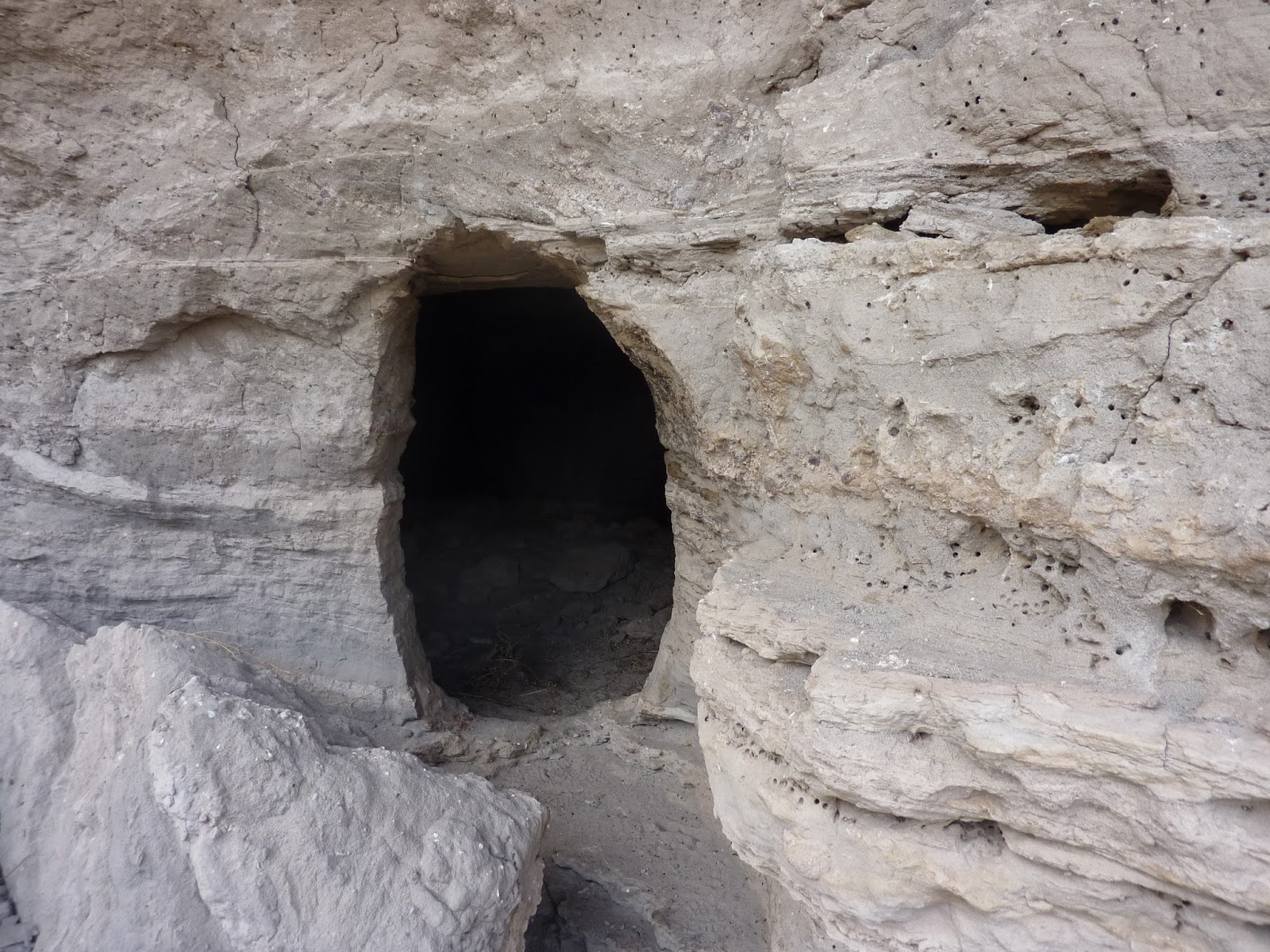 |
| Mindeleff Cavates |
 |
| A grand entrance. |
We visit friends Kim and Lisa who have been wintering in
Camp Verde, AZ. They’ve planned a special hike for us to the Mindeleff Cavates.
These cavates were surveyed in 1891 by archeologist Cosmos Mindeleff and are
one of the largest cluster of hand dug caves in the Southwest along with those in
Frijoles Canyon at Bandelier, New Mexico. They were dug into a soft layer of calcareous
sandstone in a cliff face below the edge of a mesa and occupied during the 1300
and 1400’s. The term cavate was coined by John Wesley Powell to distinguish
this type of dwelling from a cliff dwelling.
 |
| Living life like a swallow. |
The Verde Valley would be austere and sunbaked but for the
deep ribbon of the Verde River that wends through it fed by Clear Creek and
other streams that flow out of the Mogollon Rim. In this valley as others in
the southwest where rivers flow, civilization flourished. The people here built
pueblos but also created these unique homes.
 |
| Many doorways |
We bump along a dirt road to the mesa edge overlooking the
Verde River, its cottonwoods and willows still in winter gray, the river deep
and cold, the land asleep. A steep, rubble path takes us to the second tier of
the mesa and we drop down a narrow cut to the slope below the cliffs. Here are
the cavates cut into two tiers of cliffs like gaping black mouths, honey combs or
swallow nests, haunting and alluring. We work our way along the cliff base to
investigate.
 |
| Small doorways . . . |
On a prominent point of the mesa are large cavates with
high, carved doors and a commanding view of the valley. These may have been
ceremonial or a focal point for communal life. The point is so narrow that the
end cavate has an opening on both sides.
It’s a strategic place as one can look up and down the valley from one
side and at the cavates in the side canyon from the other. The cavates in the
side canyon have a limited view of the river and are more protected.
 |
| and large doorways. |
 |
| Lisa & Kim inside a cavate. |
We enter the cavates cautiously but find no wintering bats
or other critters like coyote though there are signs they occasionally occupy
these places so we don’t go poking around into the darker depths. There are no
old ghosts or artifacts as everything was looted long ago. A few old corncobs
can be found and pot shards on the slopes below. We find some small stone tools
but leave everything in its place. The empty houses contain only scattered
rocks, dust and smoke blackened ceilings.
 |
| Vault ceilings and spacious great room. |
The cavates have a general floor plan, a large circular
central room with a dome ceiling and one or two small rooms off the main room with
low ceilings and small openings that we’d have to crawl through to enter so we
don’t. We imagine these rooms were used for sleeping or storage. Many have niches
and hearths or shallow square depressions cut into the floor. Some of the best
cavates have alcoves with floors a foot or so higher than the main floor. There
are a few with interconnecting doors which may have been multiple family homes.
Lisa and I evaluate the attributes of each cavate as if we are real estate
hunting and wonder about the people’s lives. We think of how welcoming the
cavates must have been with the glow of firelight coming from the doorways.
 |
| Room for a growing family. |
The cavates are slowly crumbling as all things will. The
mesa edge is wearing away with wind and weather and tumbling down in front of
the doors. Some of the ceilings have collapsed. It’s a lonely place now but
once something vibrant was happening here. We’re glad to have the opportunity
to come, to appreciate and connect with past a civilization.
 |
| Interconnecting doors. |
Hope you make lots of connections on your travels. Till next
time.
Jackie
Jackie
 |
| Rooms with a view. |